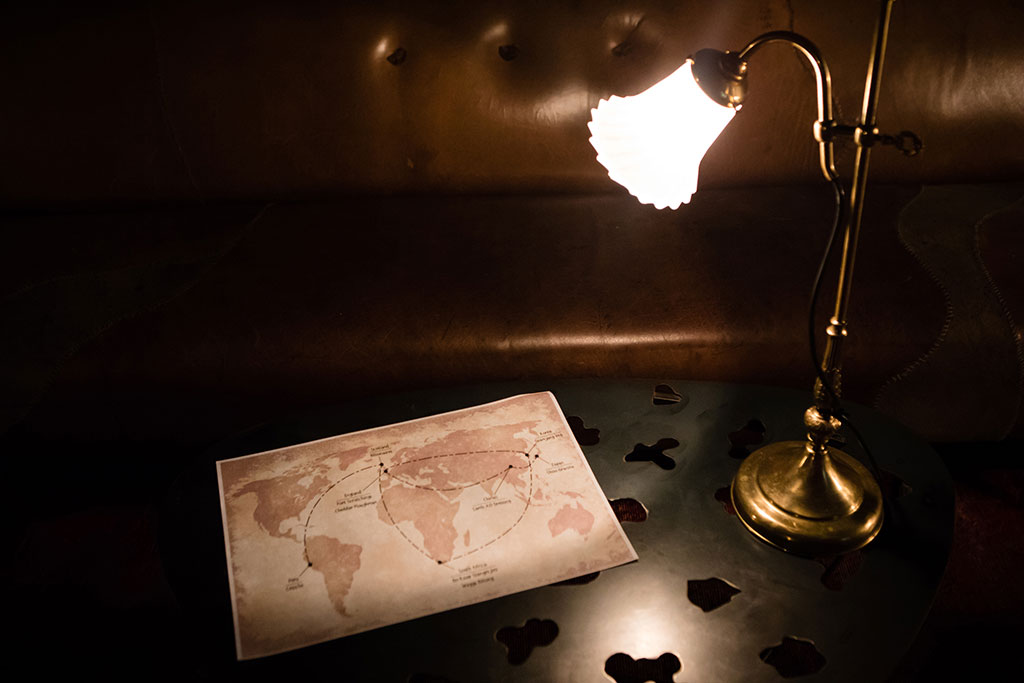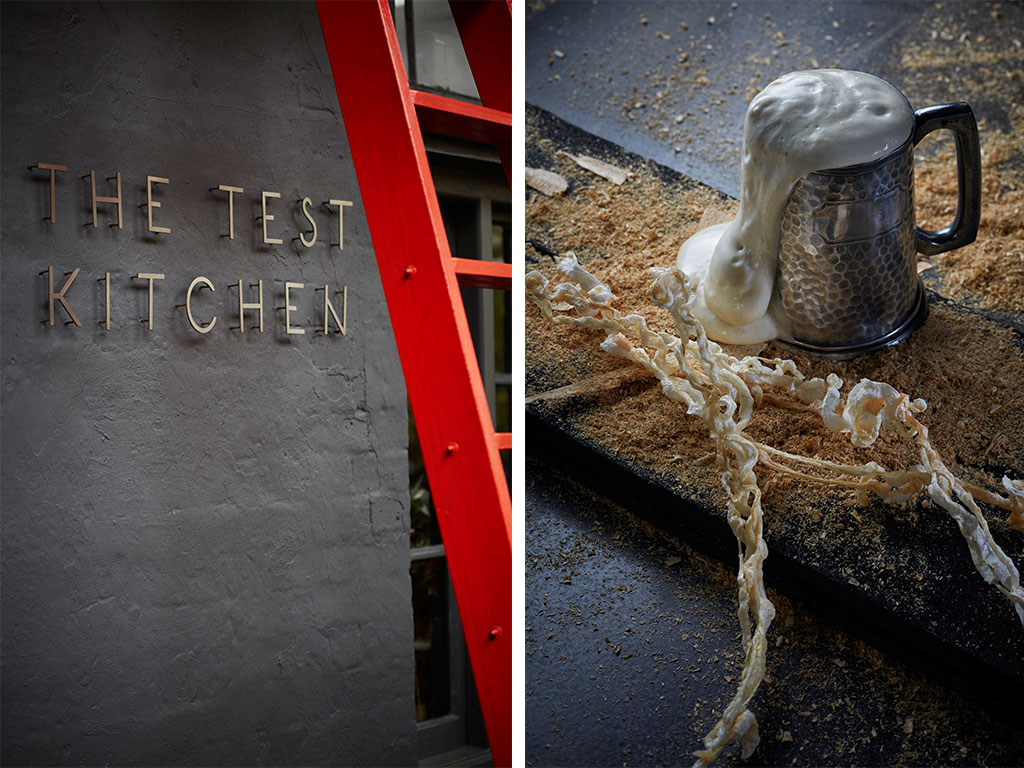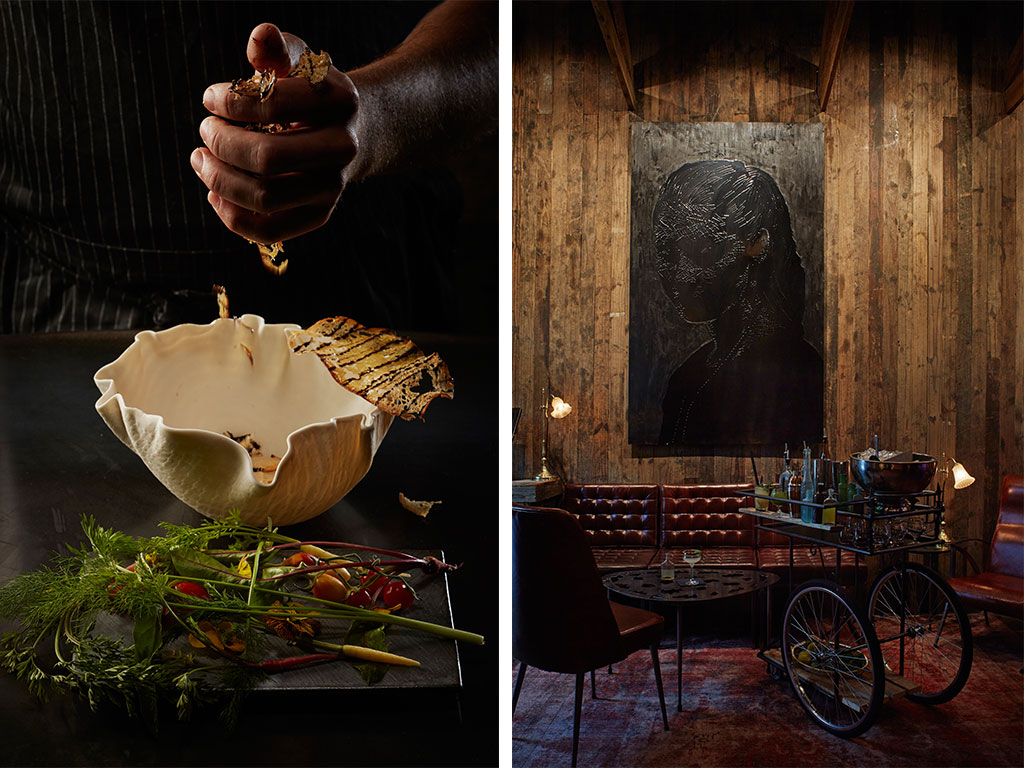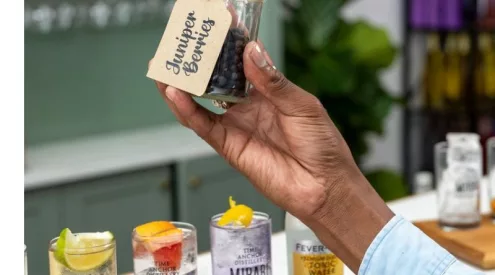The Test Kitchen has just been awarded the number one position in the Eat Out Top 10 Restaurant Awards. Luke Dale-Roberts tells us how his travels have informed The Test Kitchen menu.
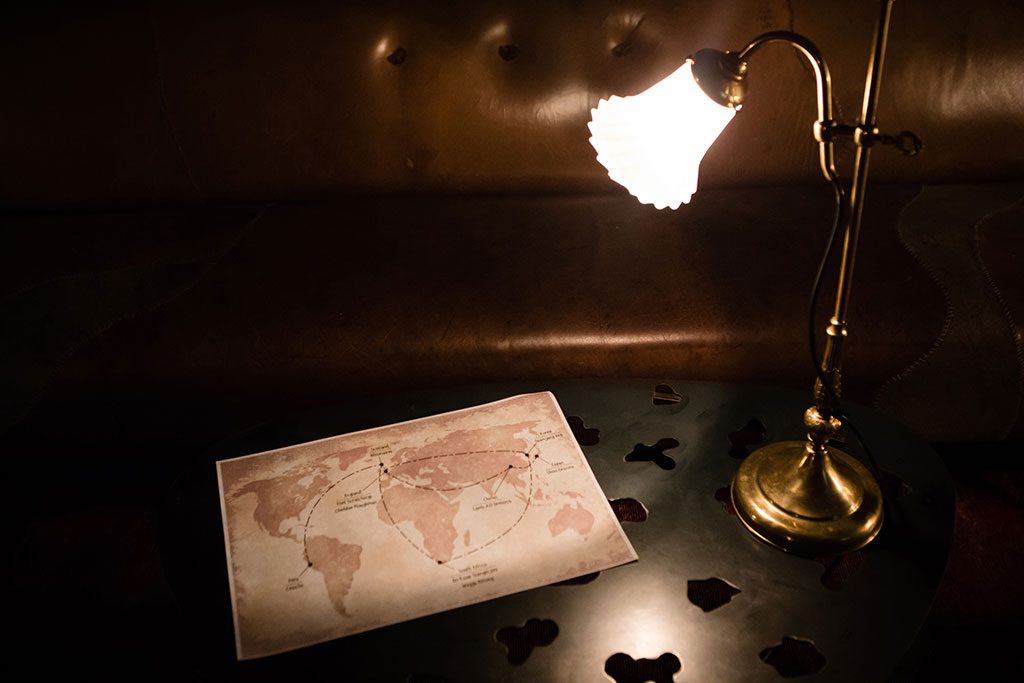
The Test Kitchen Map, which shows where the inspiration for each dish came from.
The Test Kitchen experience starts out in the Dark Room, a ‘soft landing’ as Luke calls it, in a moody, low-lit lounge room where pre-dinner cocktails are served.
Diners are handed a map to trace Luke’s culinary journey, with each ‘snack’ representing a different destination. Although ‘snack’ is an understatement for the thought, skill and labour invested in each tiny package that delivers, as Luke puts it, ‘a power punch of flavour’.
On the map: England
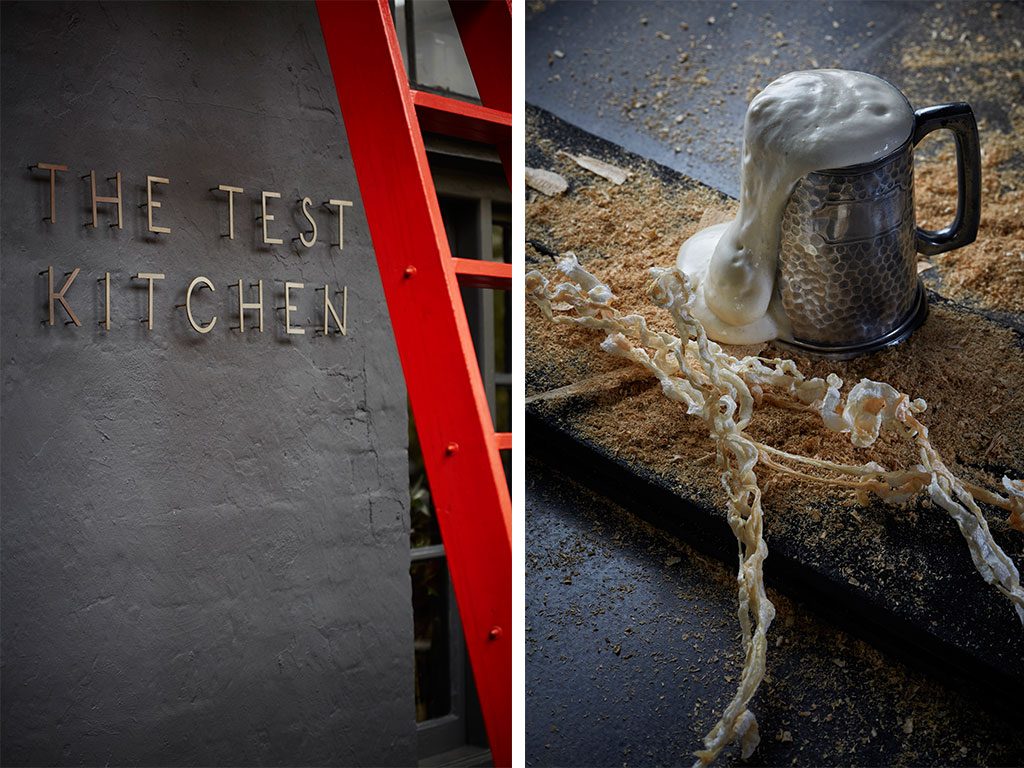
Inspired by England: Pork scratching, pint of Guinness, celeriac salt and vinegar.
Luke: ‘I’m quite influenced by the fact that I grew up in the UK and when visiting I always go back to East Sussex to the same house where I was born. There’s a local pub called The Three Cups where I used to go when I was a youngster – to play pool out the back and try get away with buying a bitter shandy! I wanted to recreate something you’d get in a pub in England. Buying a pint of lager, a bag of pork scratchings and playing darts – it’s so typically English!’
On the plate: Pork scratchings
Guiness foam is poured into a silver tankard and served with a huge swathe of puffed-up crackling.
On the map: South Africa
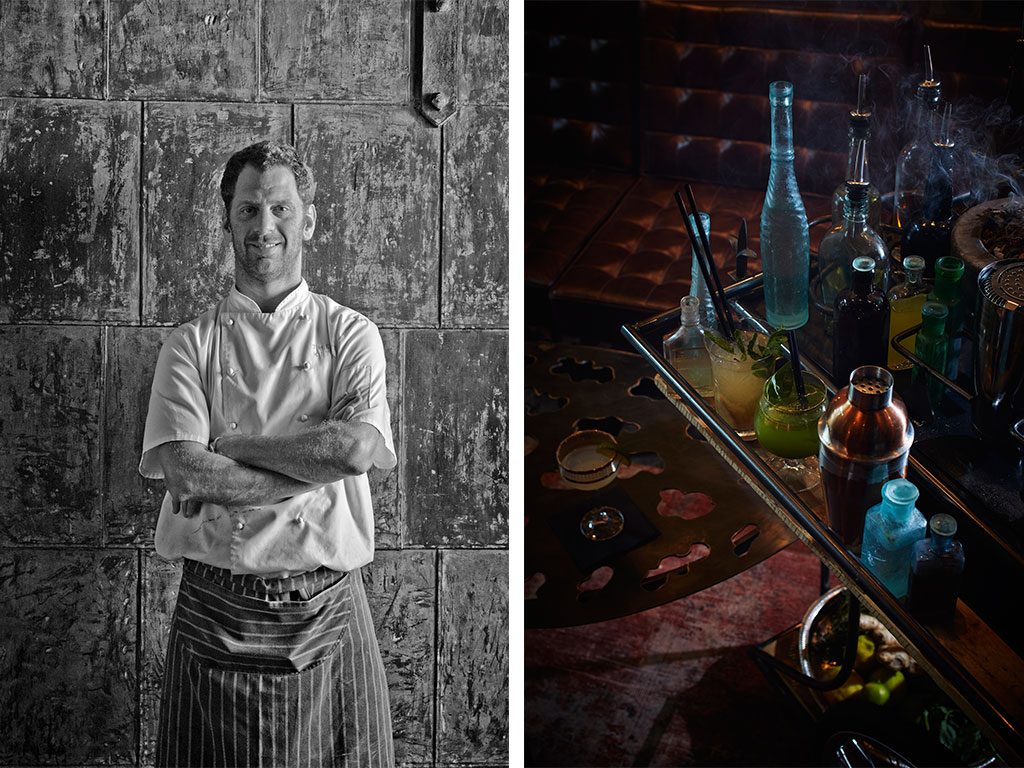
The Test Kitchen Chef and Proprietor Luke Dale Roberts.
Luke: ‘Obviously home now is South Africa. I go to Fargo trading quite regularly and I like all the different ingredients they’ve got there, especially the salty, savoury slangetjies. I also like biltong and I love liquorice – liquorice root, which is very different to the molasses-based candy. For me it’s a very clever thing to use because it elongates flavour. If you eat liquorice and have a sip of red wine, the red wine resonates for longer on your palate. The liquorice sticks are from my childhood. You could buy them in health food shops in England and my mum used to give us liquorice sticks to chew when we were kids.’
On the plate: Bo-Kaap Slangetjies, Wagyu Biltong
The biltong is Wagyu beef cured with liquorice and dried for a month. Diners pick up slices of biltong with liquorice sticks. The same batter as is used to make ‘slangetjies’ (shevra) is baked, deep-fried and dotted crème fraiche, an emulsion of locally sourced lime atchar and fried curry leaves.
On the map: Korea
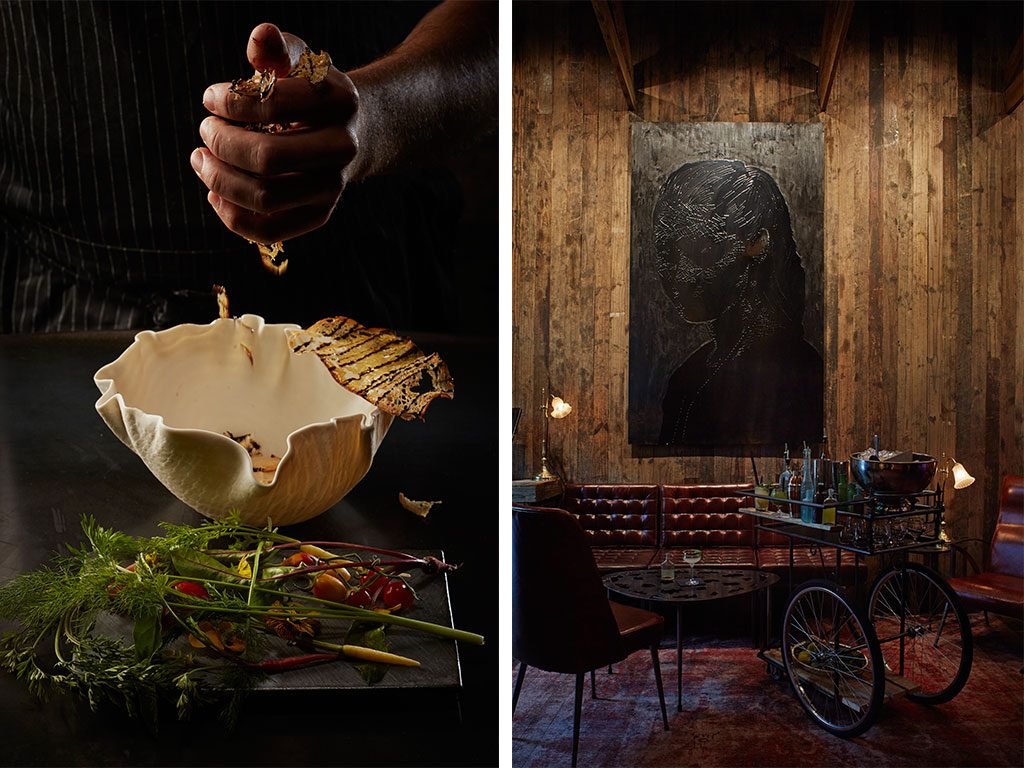
Mason farm baby vegetables with Ssamjang dip, marmite on toast.
On the plate: Ssam Jang Veg
Miniature vegetables (radish, carrot) with a Ssam Jang dip which gets Marmite toast crumbs crushed and crumbled over the top just before eating – creamy, crunchy, fresh with seriously beefed up umami.
Luke’s tip on what to eat in Korea
‘We regularly went for Korean Barbecue called Samgyeopsal, which is pork belly barbecue. There was one place that did a white wine marinaded Samgyeopsal with fresh (unfermented) kimchi, which made it quite light and refreshing. The whole experience was very clean; it wasn’t overly fermented. We loved that.’
Luke’s 2018 Travel Wishlist
Tokyo
‘I want to go back to Tokyo. I worked in a cool restaurant called Shin Ju in Tokyo and it really changed the direction of my food. It’s organic modern Japanese cuisine with an Italian slant to it. It’s designed by this amazing designer called Takashi Sugimoto and being exposed to his restaurants also gave me a real sense of like what I wanted The Test Kitchen to be like – the open kitchen concept.’
San Sebastian
‘I was invited to Gastronomica in San Sebastian and would like to return and take Sandalene. If everything goes well we’ll be there for the World’s 50 Best Restaurant awards in 2018 because they are holding it in Bilbao, so that’s on the wishlist, definitely. While we’re in Spain I would also like to eat at Asador Etxebarri, I’ve heard it’s really cool and feel like it would strike a chord.’
The price of the full Test Kitchen menu without the wine pairing is R1800. All other prices are listed online at thetestkitchen.co.za









